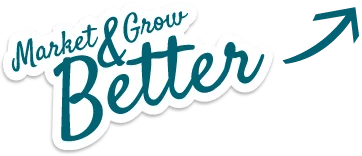
If you’re in a state of website-envy, it might be time to look at your marketing strategy.
Your website is the greatest tool your small business can use to increase leads, sales and loyal customers in today’s tech-savvy world. But if you aren’t incorporating the inbound methodology into your web marketing strategy, you aren’t using this money-making tool effectively.
In a nutshell, inbound marketing is the digital methodology used to attract customers by creating content that is valuable, compelling and enjoyable. It’s popular, too. According to the 2016 State of Inbound report, organizations that use the inbound methodology are four times more likely to rate their marketing strategy as effective. The methodology operates under four key pillars to build sustainable growth over time: Attract, Convert, Close and Delight.
Every one of your customers goes through a process as they make decisions about buying. We call that the buyer’s journey. Where they are getting information during that process is a big factor in your inbound efforts. Unlike outbound marketing, which is traditionally interruption-based (i.e. radio and TV ads, direct mail and billboards), inbound marketing is all about being customer-centric and leverages content that solves a specific problem or satisfies a need, for a customer. Instead of ambushing a potential customer, the focus is on getting found by customers that are already searching online for information about your industry, product, or service. Once they find your information, you’re interacting with them and providing the right content at the right time, depending on where they are in the buyer’s journey.
Inbound marketing is a complex methodology, but don’t let that fool you into thinking it’s too intricate for your business. Inbound plans can start simply and build. But, employ inbound in your marketing, because the four pillars of the inbound methodology build trust and strong relationships. Each pillar has a process used to move potential customers to the next stage. Here’s a brief explanation of the four pillars:
ATTRACT
The goal is to attract the right prospect to your website. Inbound marketers develop buyer personas. That is, categorizing who wants their product, what interests they have, and where to find them. Pinpointing and understanding your persona is vital to crafting your inbound messages and content. This content is then strategically placed and promoted where a prospect can find it, download it, share it, and consume it.
Inbound marketers provide content through a variety of different formats, based on buyer personas. One of the biggest differences between inbound and outbound marketing is the volume of content produced. Offering a variety of videos, webinars, blogs, e-books, and podcasts gives potential customers a plethora of ways to access information based on their preference, thus improving the user experience.
The final magic of this pillar is in maximizing key word searches. Most inbound plans today will focus on organic keyword ranking and paid programs. Each website page should contain well-researched keywords and language that your personas would use to find information about your service or product. Customize URLs, put keywords in your blogs, and make sure headlines are easily searchable.
CONVERT
Once you attract the right visitors to your website, the goal is to collect their contact information and continue communication. We call that converting a visitor to a lead.
Form fields on a landing page will gather contact information in the “Convert” pillar of the inbound methodology. Contact information is extremely valuable. It’s easier to get when there is a relevant piece of content available in return.
CLOSE
The “Close” pillar of the inbound methodology is where revenue finally comes in to play. Hooray!
You might like to think of this as the sales stage, but it’s important for a marketing and sales team to be on the same page. We call it “Smarketing”, the alignment of sales and marketing. It’s about putting a plan in place to follow up with leads to close the sale. Your persona will tell you the appropriate tools to use – email, social platforms, a follow up phone call, or even a text.
DELIGHT
The hours you’ve spent mastering the first three pillars of inbound marketing have finally paid off, but it’s not time to pack up shop just yet. The “Delight” pillar is critical to the entire process.
In this phase, inbound marketers are focused on strengthening and extending the relationship they’ve already made with the customer.
The goal is to:
- Turn customers into promoters
- Upsell
- Cross sell
- Establish thought leadership
Luckily, contact information is already at your fingertips, so you can follow up, strategically, with emails tailored to their specific needs.
If you’ve gotten this far, customers should be both loyal customers and promoters of your business.
Every pillar of the inbound methodology revolves around your persona. Businesses attract customers by creating content that relates to their problems. Businesses convert people in to leads by producing something of value in exchange for contact information. Customers are closed when target marketing and sales messages meet their needs. Finally, customers are delighted by follow-up interactions and additional, valuable content.
The more you care about your customers and understand their needs, the more effective your inbound marketing strategy will be.
Topics: inbound marketing, marketing, digital marketing, state of inbound, small business






